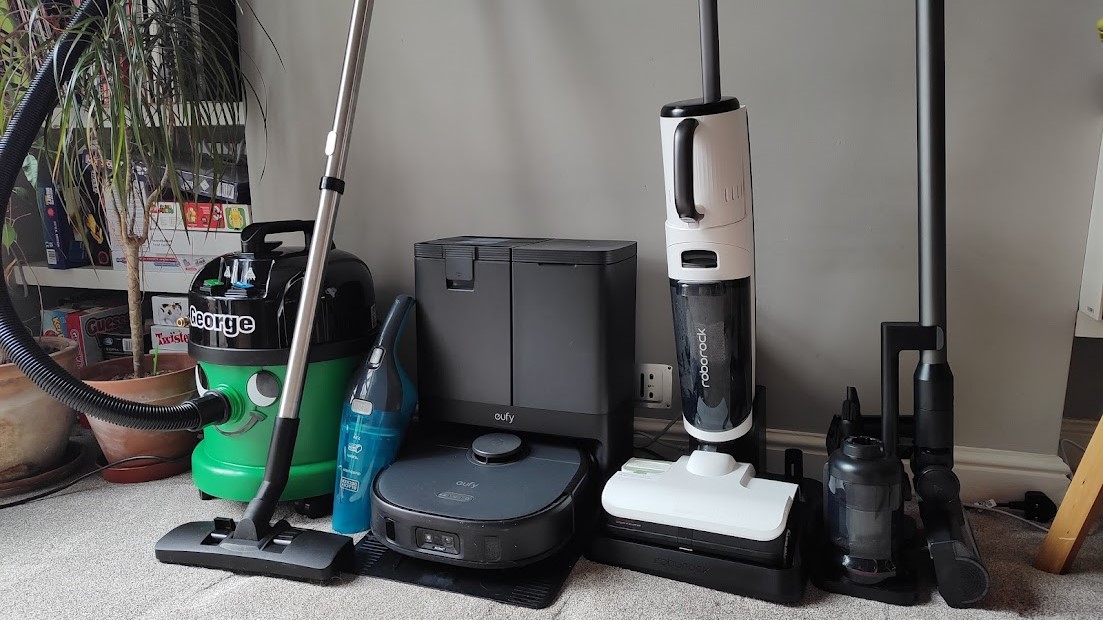If you’ve ever found yourself frantically mopping up soggy cereal from your kitchen floor or struggling to clean up wet leaves from your patio and wondered whether a wet/dry vac might handle it better, you’re right. A wet/dry vacuum is the perfect solution to make these household tasks quick and easy. That’s because wet/dry vacuums are designed to handle both liquids and dry debris, making them incredibly versatile cleaning tools. Depending on your chosen model, they can tackle tough jobs that even the best traditional vacuum cleaners can't manage, from flooded basements to washing carpets.
The best wet/dry vacuums come with various attachments and accessories. From extension wands for hard-to-reach areas to specialized nozzles for car cleaning and upholstery tools, these devices can handle almost any cleaning task inside or outside your home.
If you're struggling to decide between a cordless, robot, or shop wet/dry vacuum, this guide to choosing the right one will explain everything you need to consider before committing, from power and performance to energy costs and warranty periods.
How to choose a wet/dry vacuum cleaner
1. Consider suction power and performance
Some wet/dry vacuums boast significantly more powerful motors and suction capabilities than standard vacuums, especially those designed for DIY clean-up and commercial use. This lets them quickly remove large volumes of liquids, mud, sand, or debris with minimal fuss. Unlike regular vacuums, their tanks are designed to contain moisture and mess safely. More domestic wet/dry vacuums sometimes feature just one container with a ‘strainer’ to remove debris and pet hair from the dirty water before emptying.
When choosing a wet/dry vacuum, consider what you want it to clean up daily or weekly, and look for models with motors and suction to suit. Greater airflow and suction power will generally mean better performance.
Tank capacity is another consideration. This can range from 2 to over 20 gallons, with some wet/dry vacuums able to collect substantial amounts before emptying the unit. However, larger tanks mean fewer interruptions during big jobs, so they can make the vacuum heavier and much more challenging to move around when full.
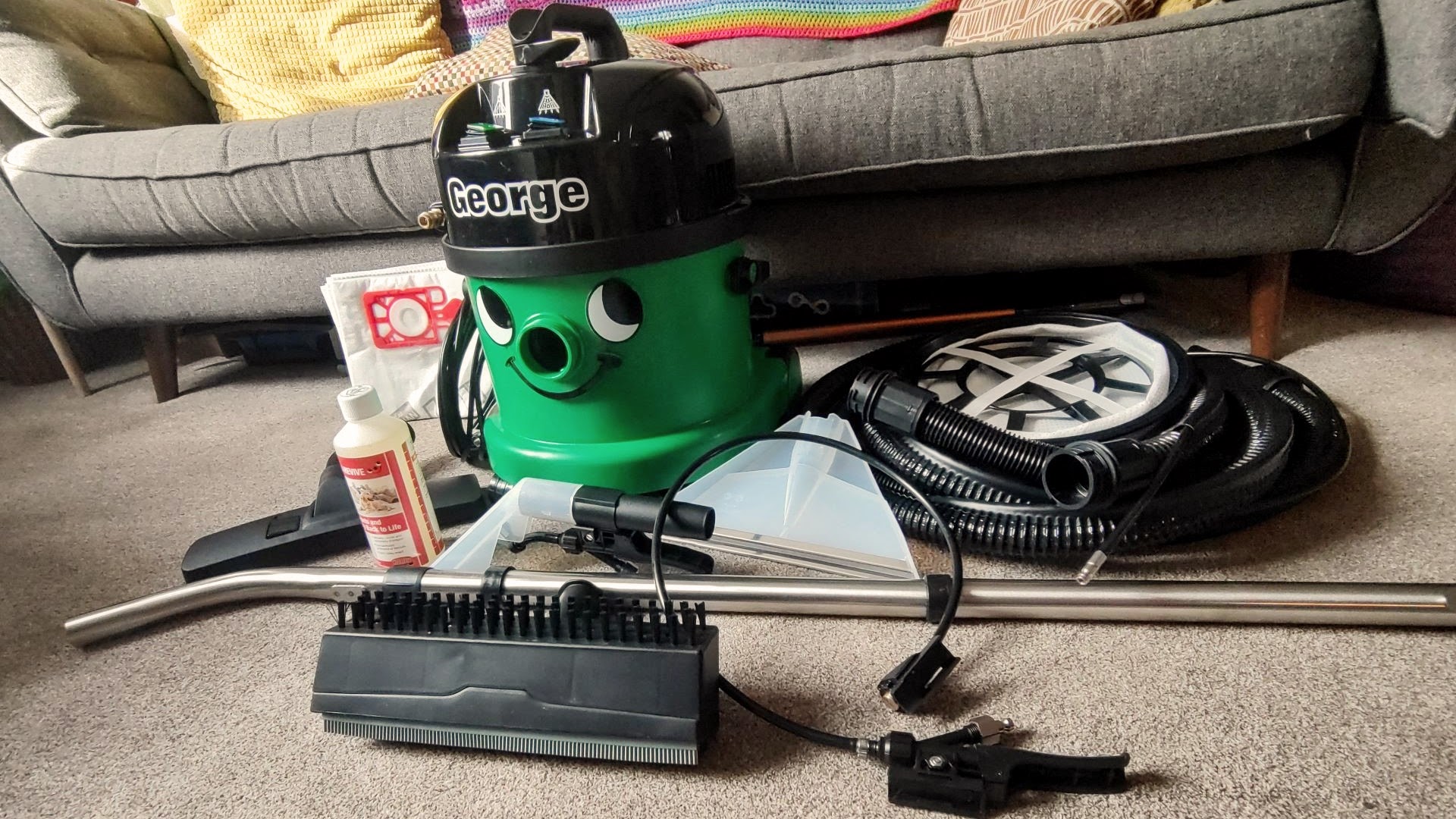
2. Look for attachments and special features
The range of attachments and accessories included with your wet/dry vacuum can transform it from a standard vacuum into a multi-purpose cleaning machine. Look for models with extension wands, crevice tools, floor nozzles, and specialized car cleaning or upholstery care attachments.
Some advanced wet/dry vacs even offer extra cleaning functions beyond picking up dirt and liquid spills, such as spot cleaning on furniture, carpets, and rugs.
If you’re looking for an appliance that can be used outdoors, one of the best shop vacuums is the best choice. It can tackle jobs inside and out, such as cleaning up spills or leaks, emptying hot tubs, unblocking drains, managing construction debris, removing fireplace ash, and dealing with pet messes.
Brian Johnson, appliance expert at My Job Quote, told me, “If you’ve ever cleaned out a filthy fish tank, you’ll understand how useful a wet/dry vacuum is!”
“Some wet/dry vacuums have a blow function, which you can use to clear leaves or light snow from footpaths or patios," he continued. "You can also use this function to blow up airbeds or other inflatable objects.”
Some models even feature a blower function, which can be used to clear leaves or light snow from outdoor areas. If you opt for a more rugged and robust option, it’s worth considering what extra tasks you could tackle around your home and backyard.

Brian Johnson has been an appliance expert for MyJobQuote for four years and has been in the industry for over 25 years. He continues working for clients, providing appliance diagnostics, repairs, and expert advice to industry professionals and homeowners. His expert tips have been featured in various reputable publications over the years.
3. Think about the filter and how easy it is to maintain
Pay attention to the vacuum filter system, which protects the motor and internal mechanisms. Regular cleaning and maintenance of these filters are essential for keeping your wet/dry vacuum operating efficiently—and some wet/dry vacs, such as the Kärcher Multi-Purpose Wet/Dry Vacuum Cleaner, make it super easy with an integrated filter cleaning system. Look for true HEPA filters, which remove 99.97% of tiny particles that can cause allergies.
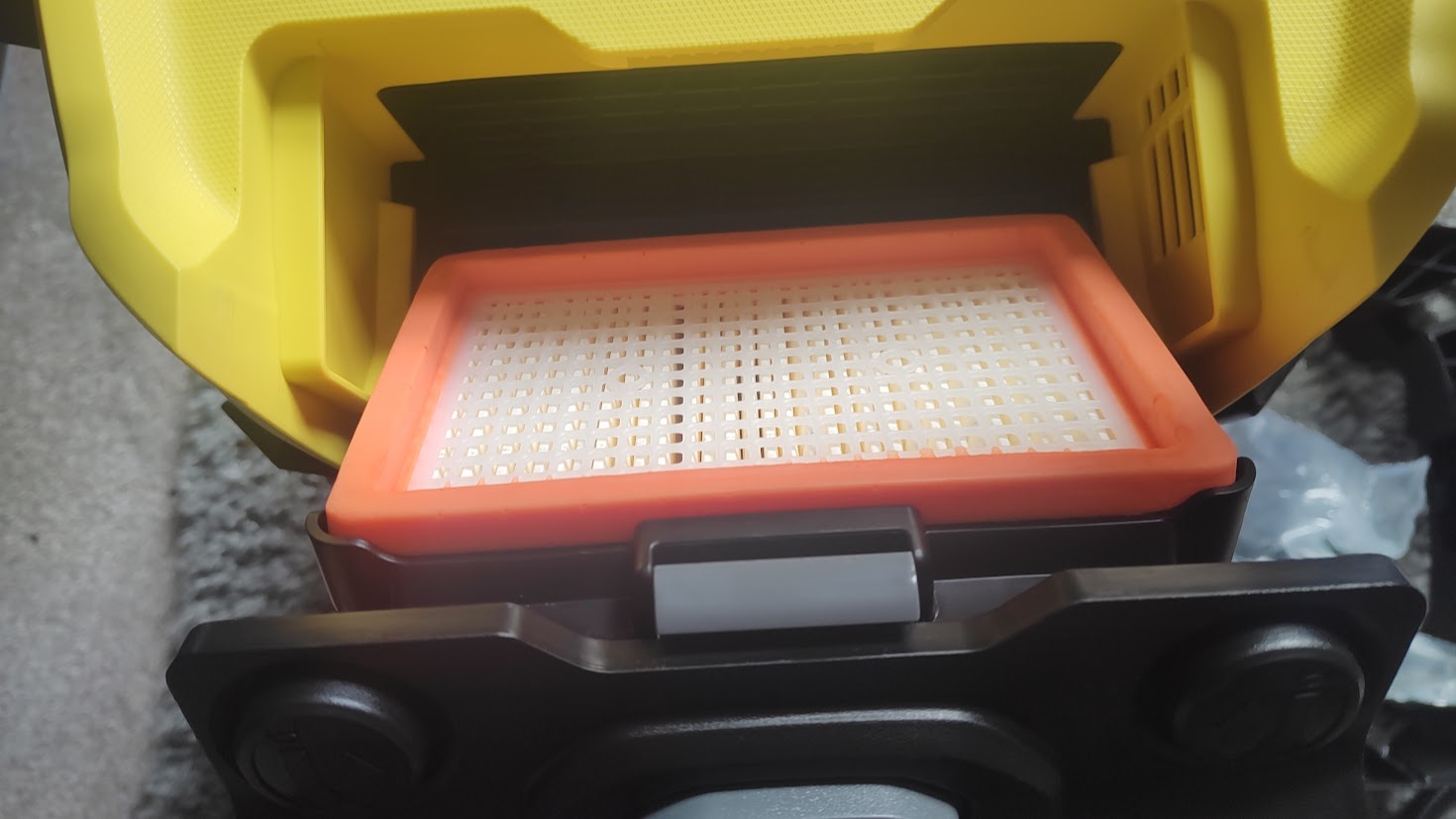
4. Check portability and storage
Consider the vacuum's weight and portability, especially if you plan to use it for various tasks around your property. Features like wheeled bases or casters can significantly improve maneuverability, particularly when dealing heavy loads. Look for models with top-mounted handles, a draining lip for the container, and cord storage options for added convenience.
Some heavy-duty wet/dry vacuums can take up quite a bit of space, while low-profile robot wet/dry vacuums can be tucked away under couches or coffee tables. Consider how much storage you've got before you invest in a large model.
5. Think about durability and brand reputation
Since wet/dry vacuums typically work harder than standard vacuums, choosing a brand known for reliability is a good idea. While the initial cost may be higher for a premium brand, a more durable machine can save you money in the long run.
Some well-regarded wet/dry vacuum market brands include Numatic (known for its George and Charles models), Karcher, Shop-Vac, Ridgid, and Craftsman. Each brand offers different features and price points, so consider your specific needs and budget.
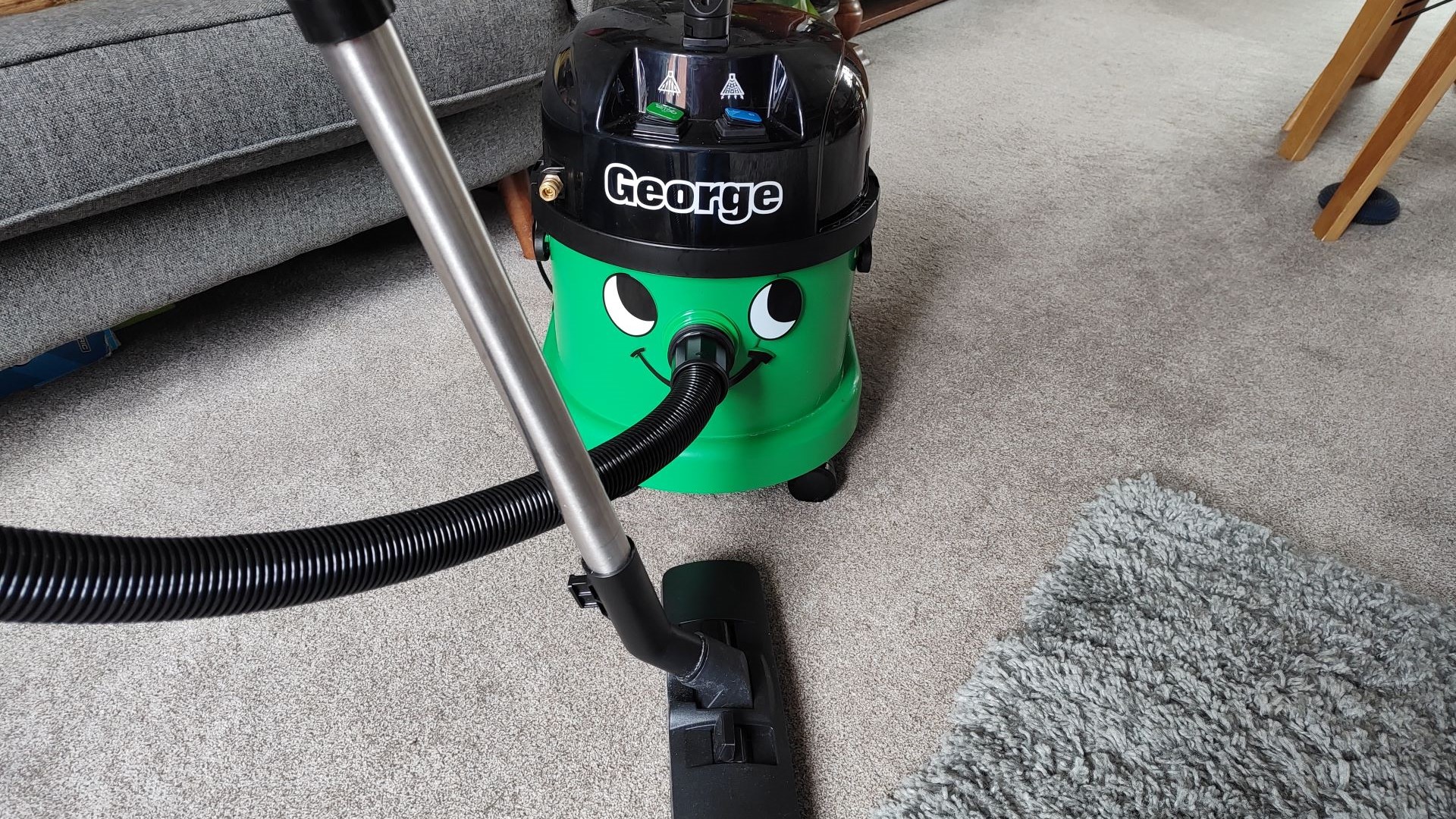
6. Consider what you'll get for your money
Wet/dry vacuum prices vary widely, with average prices typically ranging from $100 to $200. Mid-range options from brands like Craftsman, DeWalt, and Shop-Vac often provide the best balance of features and affordability. However, if you need a durable model with a few knocks and excellent suction power, you may prefer to invest in a professional-grade model.
Consider factors like warranty coverage (anywhere from 1 to 3 years) and energy efficiency. While wet/dry vacuums generally use more energy than traditional cleaning methods, some models may offer eco-friendly features to help reduce their environmental impact.
I spoke to Paul Hambidge, managing director of Factory Direct Flooring in the UK, to learn more. “The environmental impacts of using a wet/dry vacuum will vary depending on your specific model,” said Hambidge. “Look out for green credentials and eco-friendly technology mentioned in the product description of the wet/dry vacuum you’re looking at to learn more.”
Before making your final decision, read user reviews better to understand real-world performance, reliability, and customer satisfaction. If you have time, look for comments that mention durability, ease of use, and after-purchase support from the manufacturer.

Paul Hambidge has nearly 35 years of flooring industry knowledge and experience from both an installation and manufacturing perspective. He began as an installer of very large commercial flooring projects for multiple retailers. As Managing Director of Factory Direct Flooring, he has been involved in all aspects of flooring and has worked with some of the largest producers of wood flooring, vinyl flooring, and laminate floors.
7. Check noise levels
Wet/dry vacuums can be noisy due to their powerful motors and impressive suction. If you live with someone sensitive to noise or don’t want to disturb your neighbors, see if you can research the decibel rating beforehand and compare models where you can. To give you an idea of noise levels, background music clocks in at around 50 decibels, while a standard vacuum can be around 85 decibels.
8. Try out a model for ease of use
If you plan to use your wet/dry vacuum regularly, consider its ergonomics and user-friendliness. Look for features that make operating it easier, such as easy-to-swap attachments, smooth-rolling wheels, lightweight design, and longer hose length. Remember that larger capacity models may be heavier and more challenging to move around, especially when full.
Even if you plan to buy your new wet/dry vac online, it's worth checking out a few models in-store to see how easy they are to move around and switch out attachments.
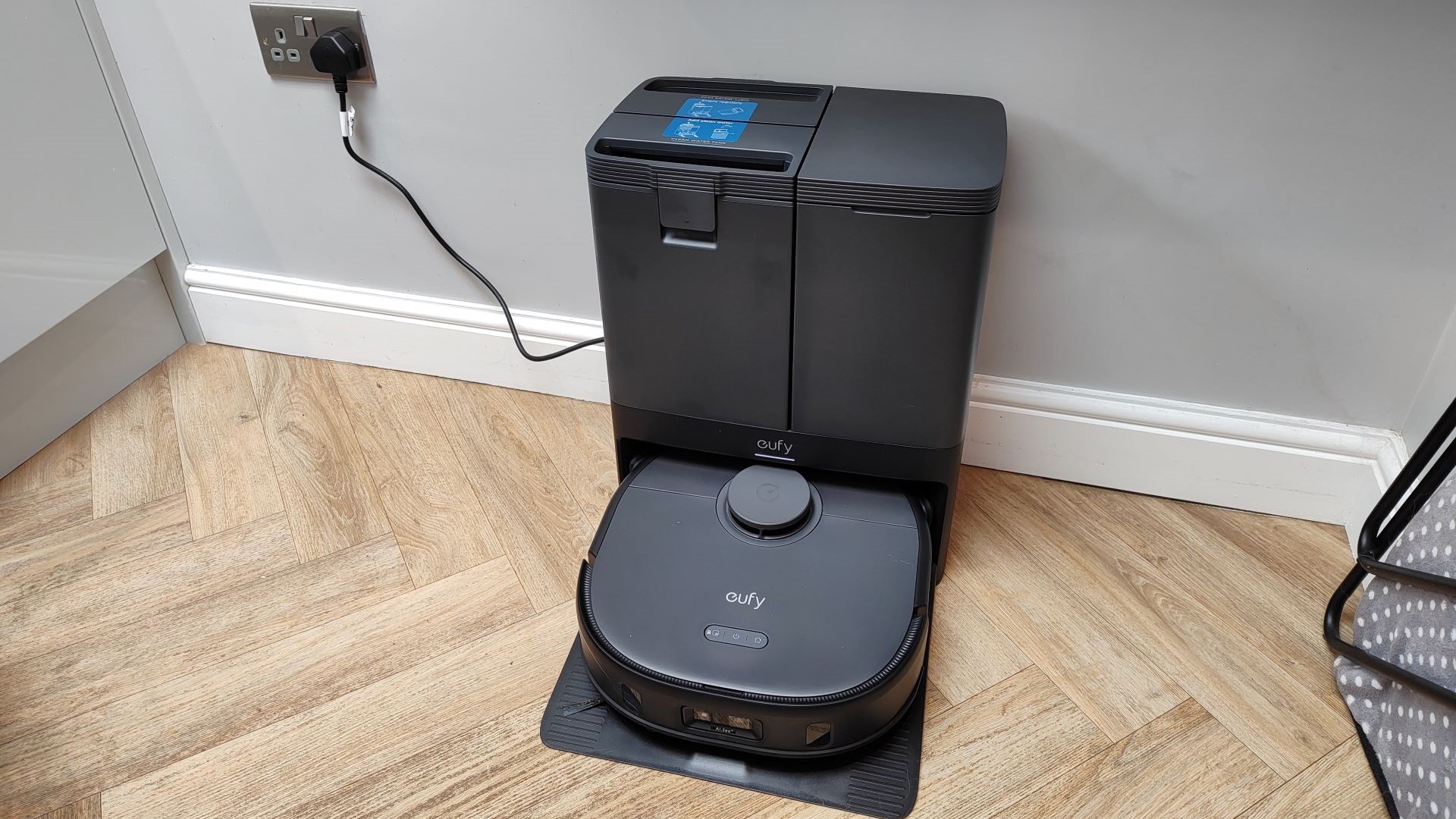
9. Corded, cordless or robot?
I’ve tested my fair share of wet/dry vacuums, reviewing corded, cordless, and robot wet/dry vacs. While a robot wet/dry vacuum will never unblock your drain or give your car a valet, they can be a good option for people with busy lifestyles who want to minimize hands-on cleaning time. You can set cleaning schedules, define no-go zones, and even have it carry out deep cleaning in specific areas. Most can be programmed to operate at night, while some even clean themselves, such as the Eufy X10 Pro Omni. However, robot models may not have the power or capacity of traditional wet/dry vacuums.
While corded shop-style wet/dry vacs offer power and performance and usually have a large tank capacity, they can be a struggle to store, and they’re often heavier and harder to move around than cordless versions. Cordless and handheld wet/dry vacs are easy to whip out at a moment’s notice, but they have much smaller tank capacities, so you’ll need to empty the dirty water tank and refill the clean water tank more frequently.
Which one you opt for comes down to your specific needs and storage capability at home, plus how easy you want it to be to pull out when there’s a fresh spill in the kitchen.
10. Think about what you'll be cleaning up
When choosing a wet/dry vacuum, consider the types of messes you'll most often need to clean.
“A wet and dry vacuum is useful for any busy household,” Johnson told me. “Particularly those with children and pets. These homes typically experience a lot of traffic in and out of the house in all seasons and weather conditions. Having a vacuum that can tackle wet, muddy feet and pawprints can be a lifesaver. If you have one that does spot cleaning, that’s a bonus for your carpets!”
While these vacuums are versatile, other cleaning methods might better handle some situations. For instance, if you frequently deal with pet poop or stinky spills, you might prefer using a mop or a specialized cleaner rather than running them through your vacuum, which would require a thorough cleaning afterward.
Even self-emptying and self-washing vacuums may struggle with persistent odors from certain messes. Consider your typical cleaning scenarios when deciding if a wet/dry vacuum is the best solution.
If you’re a tradesperson, you may want something that will fit in your van, not take up too much room, but still do the job. For DIY enthusiasts, the durability of the vacuum should be foremost on your mind, as should its ability to pick up anything from rubble to sawdust. Busy households may benefit from a wet/dry vacuum that can quickly transform from an everyday vacuum to one that can also tackle unforeseen spillages or leaks.
By carefully considering each factor above, you can find a wet/dry vacuum that will suit your specific needs and give you the best wet/dry vac experience.
